Fat Pitbull isn’t a term that flatters these magnificent pups, which is why we’re not fond of using it, but it’s important to stress all of the reasons and ways to improve their health and life longevity.
Obesity is a common issue among canines that love to eat a lot but aren’t fond of exercising.
Fat dogs are often considered cute because of their fluffiness, but all of the health issues that they might develop are not, which is why we should take more care of their diet.
Find out the reasons why you might own a fat puppy and how to prevent obesity in your Pittie successfully by reading this article.
How Do I Know My Pitbull Is Overweight?

Every dog lover takes great care of their furry companions, but the tempo of life has become hectic for a great number of people, so it’s no surprise that you can’t always find time for outdoor activities with your pup.
Lack of physical activity and chronic overfeeding of pets are some of the main reasons dogs become obese.
Golden retrievers, Pit Bulls, Bulldogs, and Cocker Spaniels are just some of the dog breeds that are more likely to struggle with obesity than others.
Unfortunately, there are more and more fat Pitbulls nowadays, and even though they really are cute with their chubby faces, the risks of numerous health issues shouldn’t be neglected.
The National Canine Cancer Foundation notes that an increase in a dog’s weight is associated with an increased risk of diabetes, heart disease, high blood pressure, and cancer.
Although some people may find a fat Pitbull endearing, the extra weight places a great amount of stress on the pup’s bones and joints.
In addition to this, you may discover that your dog is less tolerant of the heat or that the pup has difficulties breathing. These are just some of the many weight-related health conditions that are becoming increasingly prevalent in today’s dogs.
READ NEXT: Why Is My Puppy Breathing So Fast? Rapid Breathing Explained
Symptoms Of Obesity In Pitbulls
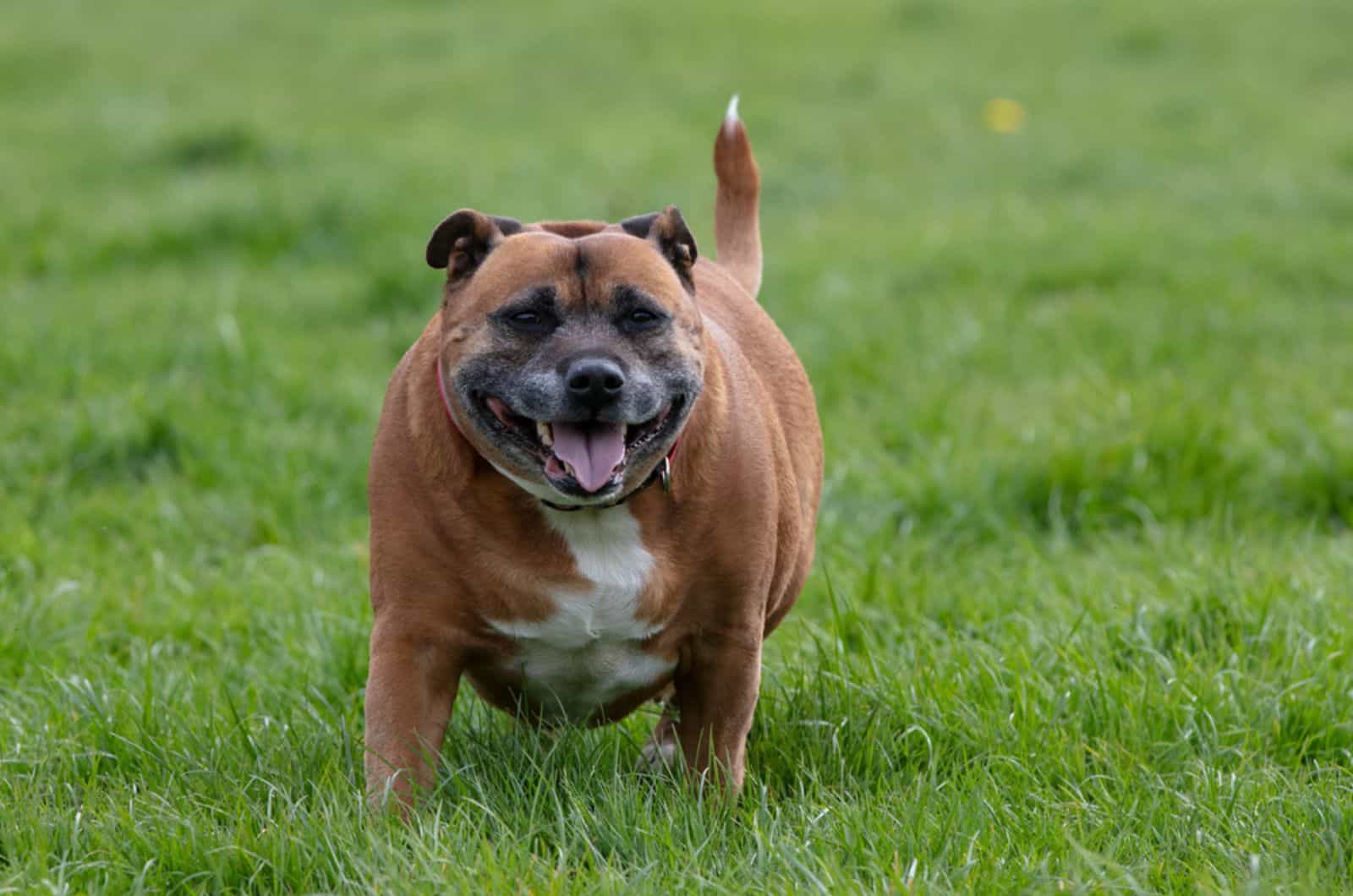
Unable To Feel The Ribs
One of the best ways to check if your pup is overweight is by going over its rib cage with your hand. If you’re not able to feel the ribs, there are high chances your doggie is obese.
There is a chance that your Pitbull is so sturdy and muscled that you can feel its ribs because of all the muscles in the stomach area, but that doesn’t happen so often.
This type of measuring is known as the Body Condition Score (BCS), which is considered quite a precise tool for checking whether the dog is obese or not.
The most important thing is to find a balance between your dog being too thin and too thick. If you’re in doubt, you can always ask the vet for advice.
Lack Of Body Definition
There is a wide range of physical traits found in Pitbulls; some pups are squarer in build and have deeper chests, while others are taller and have longer legs.
The body definition is an important part of the Pittie’s musculature, regardless of the body type they might have. This is indicated by a larger rib cage that gradually narrows down to a defined waist.
If there’s a straight body line from the dog’s chest to the tail, this means that your pet is obese.
Heavy Breathing
The fact that your Pitbull is gasping for air even when he is not anxious or overheating is another indication that he is overweight.
It’s possible that your Pittie is overweight and out of shape if he starts to cough after only walking a block or two.
It is, without a doubt, time to get started on an exercise routine in order to gradually recover his strength and shed some of those extra pounds.
What Can I Do?
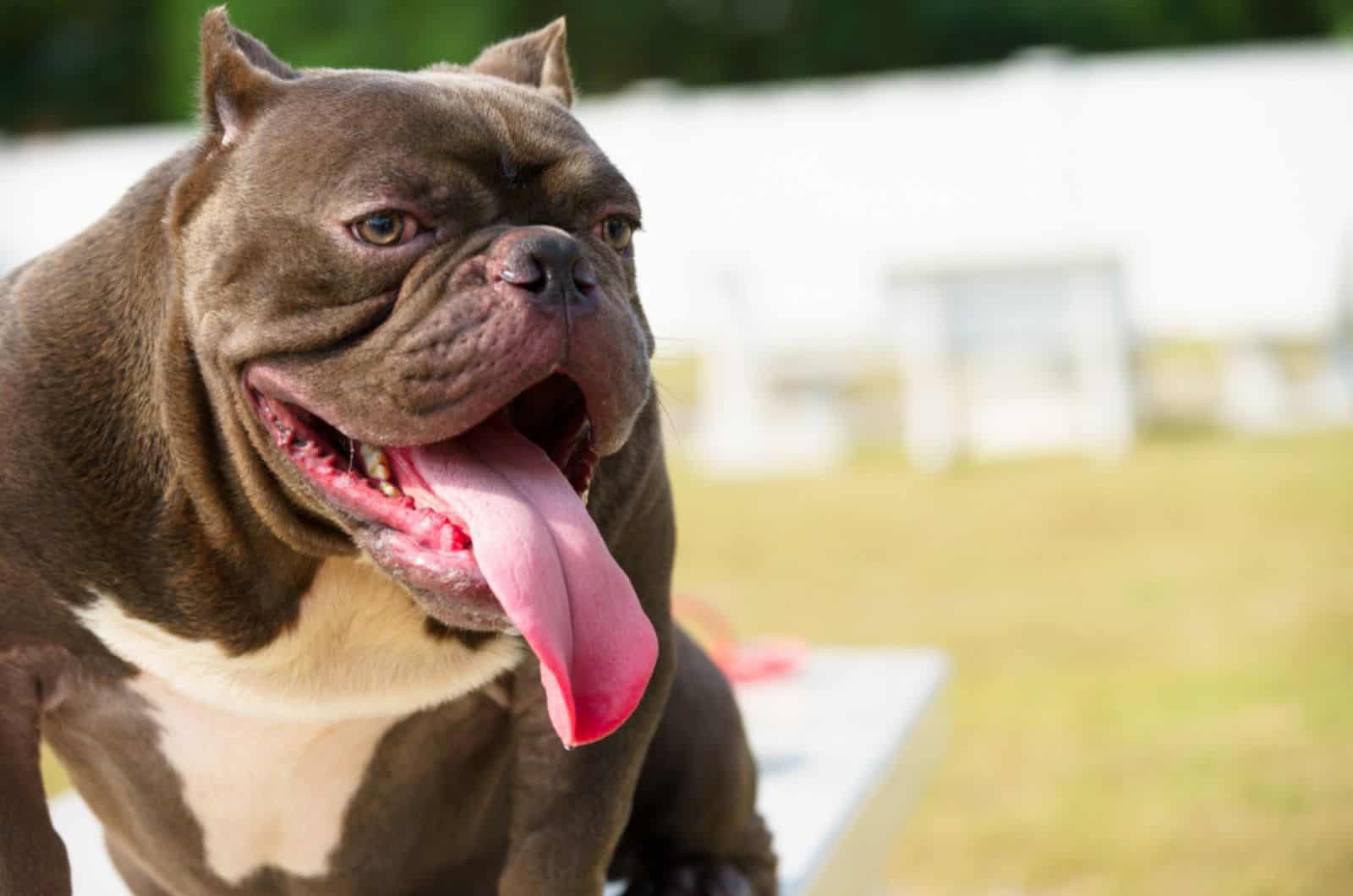
There is a number of different approaches that might be taken to assist you with your overweight Pitbull puppy.
It is essential to keep in mind that the changes in your pup’s life are initiated and implemented by you and that you, as the owner, have to be disciplined enough to discipline your pet.
RELATED: How To Show Dominance To A Dog? 17 Steps To An Alpha Leader
Dogs aren’t just pets, they’re family members, which is why you should stick to all healthy changes as you would do in order to achieve a healthy weight for yourself.
Here are some of the simplest ways how to help your fat Pitbull reach a healthy weight again:
Go For Balanced Diet
When canines age and gain weight, it is not always easy for their owners to notice the change, which can result in what is known as the “fat pet gap“.
This term was coined by the Association for Pet Obesity Prevention.
Essentially, it means that the dog owner no longer considers pet obesity an issue as it has become a regular thing. It’s interesting to notice that a great number of people who own obese canines don’t find any problems with it.
During a 2021 survey conducted by the Association for Pet Obesity Prevention, dog owners and veterinarians had quite different views regarding the diet and nutrition of canines.
That is one of the main reasons why the percentage of obese canines is still on the rise, as many people still have different opinions on what kind of food is considered healthy and beneficial for their pets.
Consulting with a dog food nutritionist or a veterinary professional is one of the best ways to fight obesity in your Pittie, especially if you notice that its weight is highly disproportional from the weight charts for this breed.
A balanced diet doesn’t just represent the size of portions but the quality of food that your pet eats. If you don’t want your pup to be another “fat Pitbull”, you should take action in time and focus on a healthy and nutritious diet, just like you would do for yourself.
Raise The Level Of Physical Activity
Exercise is essential to the emotional and physical well-being of all dogs, not only those who are overweight but all pups, regardless of weight.
Regular exercise and quality outdoor time will have plenty of physical and mental benefits for your pup.
If you keep your Pittie on his regularly scheduled exercise routines and try your best to find something that he likes doing, you will not only see a change in his weight, but you will also see an improvement in his intellect.
Remember, it might not be easy to create a routine, especially if your overweight pet is already used to little to no exercising, but all of your efforts will pay off later.
With an increased level of physical activity, you are giving your pet a chance to live longer and to have less risk of getting diseases that are related to obesity.
This is especially true for robust and big dogs with shorter lifespans, such as Rottweilers, Dogue de Bordeauxes (French Mastiff), Saint Bernards, Newfoundlands, Pitbulls, etc.
Canines like the Cane Corso, Boxers, Whippets, and German Shepherds might not be prone to obesity generally, but they still might gain excessive weight if they don’t exercise enough.
RELATED: German Shepherd Raw Diet Habits: Yes Or No?
Establish a Timetable For Portioned Meals
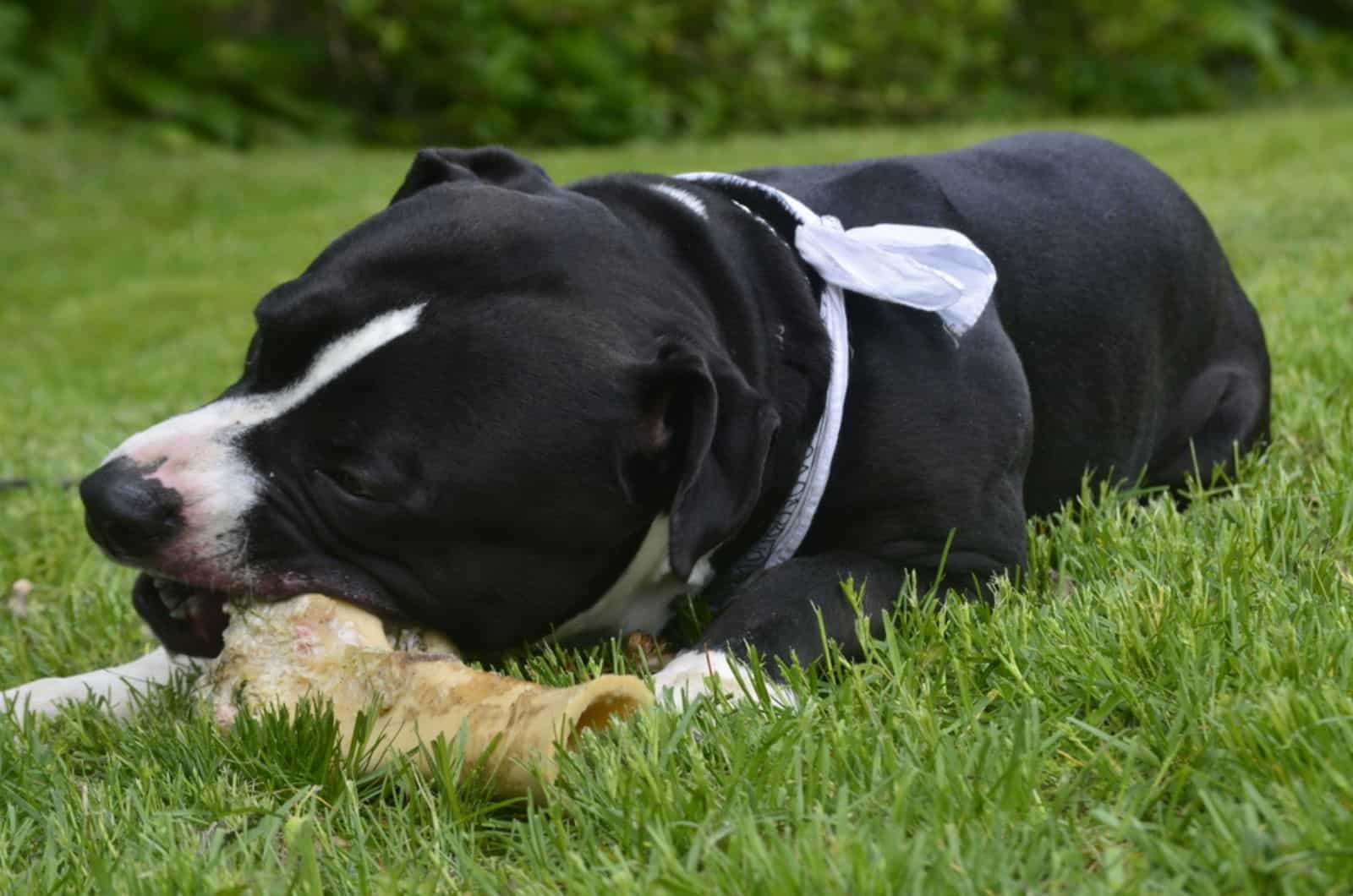
If you have an overweight Pittie, there is a high chance that it’s consuming bigger portions of food than it actually requires.
First and foremost, you need to make sure that your dog feeds at regular intervals at predetermined times throughout the day.
If the pet is allowed to eat freely throughout the day, you won’t be able to monitor the number of meals and the amount of food that it eats.
You, as the owner, should have full control of your dog’s meals, including the amount of food that they ingest during the day.
Discover how much your pet eats currently, and then gradually reduce the amount until you find the level that allows the dog to be pleased while maintaining a healthy weight.
Keep in mind that what seems like a modest portion to you may really be sufficient for your Pitbull‘s stomach. Consult your veterinarian for clarification on the appropriate serving size if you are confused about it.
Also, if you give your pet treats on a regular basis, try to cut the number of treats it receives. There’s no need to cut down on treats completely, simply take that amount out from the meal size.
How Much Should My Pitbull Weigh?
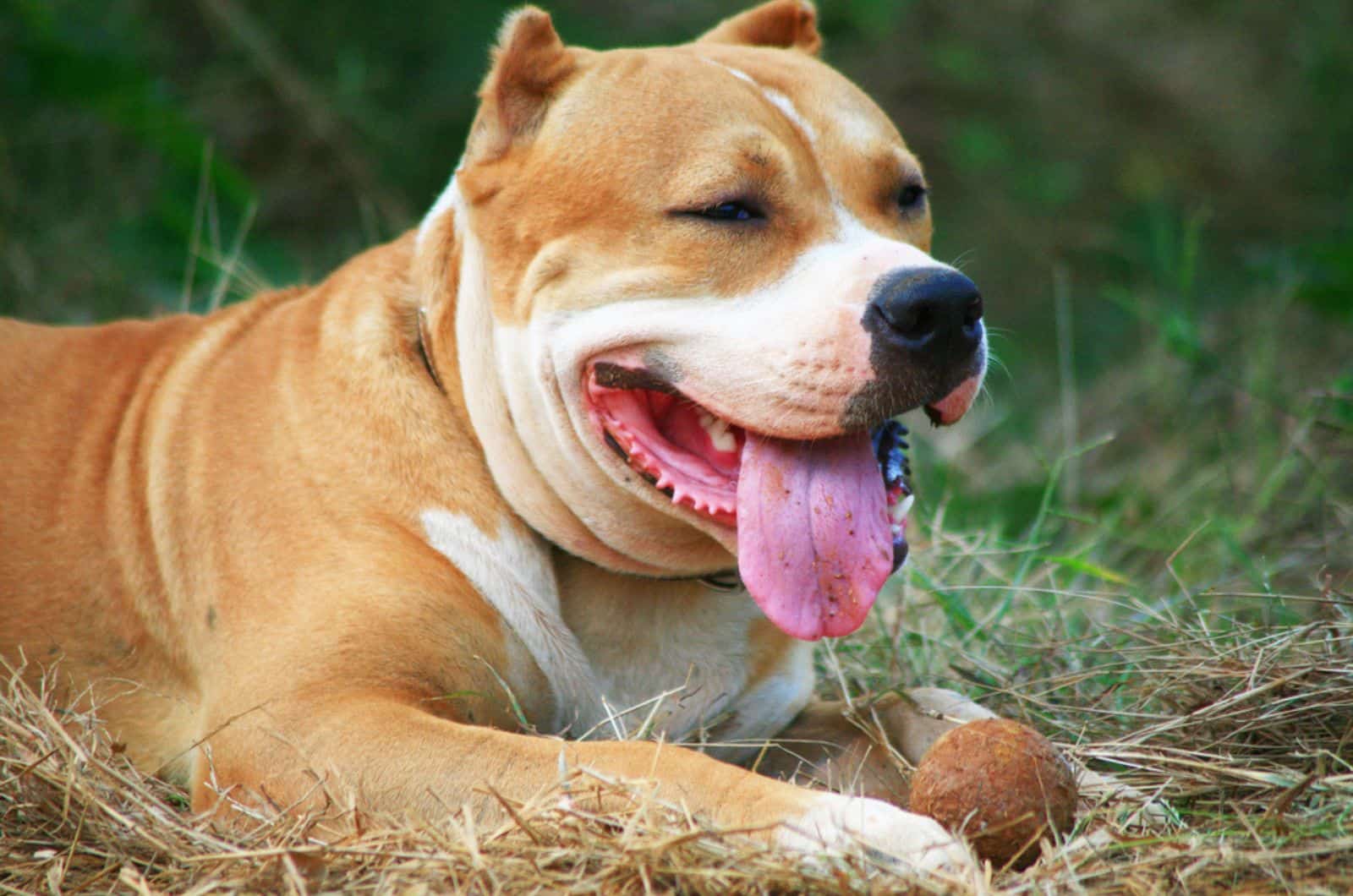
Before we answer this question, it’s important to make a distinction between Pitbull types of canines. As you may already know, Pitbull is more of a category of canines with similar traits rather than a single dog breed.
This type of pup usually refers to a Bulldog and Terrier combination, which can be divided into further categories.
There are four different types of Pitbulls:
• American Pit Bull Terrier
• The Staffordshire Bull Terrier
• American Bully
• The American Staffordshire Terrier
READ NEXT: Top 10 Staffordshire Bull Terrier Breeders In USA
In the next few paragraphs, we are going to examine the average weight of each of these breeds in order to show the differences between Pitbull pups of healthy weight and those that are overweight.
American Pit Bull Terrier

The American Pit Bull Terrier, just like any other dog, varies in weight throughout different life stages. Therefore, a baby Pitbull will certainly not have the same weight at three and twelve months of age.
This dog breed is expected to weigh about 35 pounds during the sixth month of its life.
When it comes to their mature age, Pit Bulls can have anywhere from 35 to 60 pounds.
The weight range might seem quite wide, but it’s mostly because of their height. Smaller American Pits (18-19 inches) will usually weigh between 35 and 45 pounds, while larger ones (up to 21 inches) might weigh about 50 to 60 pounds and still be considered healthy.
Keep in mind that 60 pounds is an upper limit and that any weight over 65 pounds is considered overweight.
A female American Pit Bull Terrier is a bit smaller than her male counterpart and usually measures from 30 to 50 pounds, with a shoulder height of 17 to 20 inches.
These measures have been set as a breed standard by the United Kennel Club (UKC), which has recognized this type of dog as an official breed.
The growth charts are the same for both the blue-nose and red-nose Pitbulls, as their differences are based mostly on their coat shades.
RELATED: A List Of 7 Reputable Blue Nose Pitbull Breeders
Staffordshire Bull Terrier
This is one of the Pitbull dog breeds that has been officially recognized by the American Kennel Club (AKC).
They are small-sized pups that usually weigh up to anywhere from 28 to 38 pounds. When it comes to their height, male Staffords generally don’t grow over 16 inches (there might be some exceptions, but they’re rather rare).
The average weight of a female Staffordshire Bull Terrier is a bit smaller than that of male pups, as it goes from 24 to 34 pounds.
The Staffordshire Bull Terrier is the smallest of the Pitbull breeds, which is why they’re more prone to obesity.
American Bully
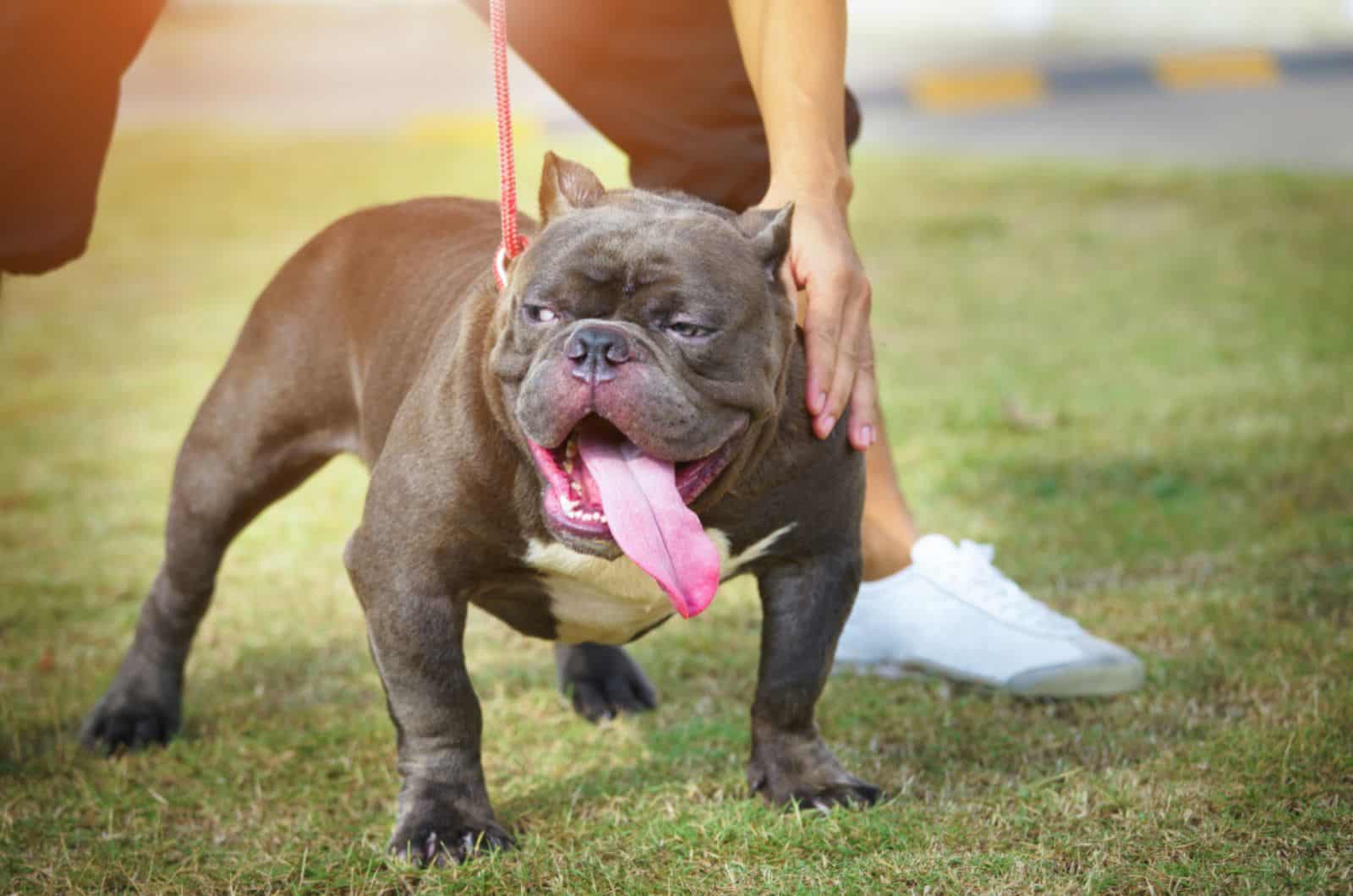
This is the only Pitbull type of canine that hasn’t been yet acknowledged by either The Kennel Club (KC) or AKC; however, UKC acknowledged them as a purebred dog breed in 2013.
American Bullies are essentially a combination of multiple breeds (Old English, American, and English Bulldogs).
These pups come in several sizes, which is why they’re divided into five different Bully types:
• Standard American Bully
• American Bully Classic
• XL American Bully
• Pocket American Bully
• Extreme American Bully
The main difference between these types of American Bullies is height, while the weight differences are insignificant.
Therefore, it can be said that adult American Bullies gain up to 80 pounds, although 85 pounds is acceptable as well.
According to the UKC breeding standard for American Bullies, the general balance between weight and height in canines is more important than the exact number of pounds and inches.
The American Staffordshire Terrier
AmStaff is a medium-sized type of Pitbull that usually grows up to 19 inches (male pups) or 18 inches (female dogs).
They’re a bit heavier than American Pitties but lighter than Staffords, as they generally weigh up to 70 pounds, or 55 if they’re female canines.
The Staffie might appear larger to some people because of their muscled body, but the truth is that they’re approximately the size of a Standard Poodle.
One of the main health problems in AmStaffs is obesity, as they easily gain weight, especially if they’re not very active.
How Much Larger Will My Pittie Get?
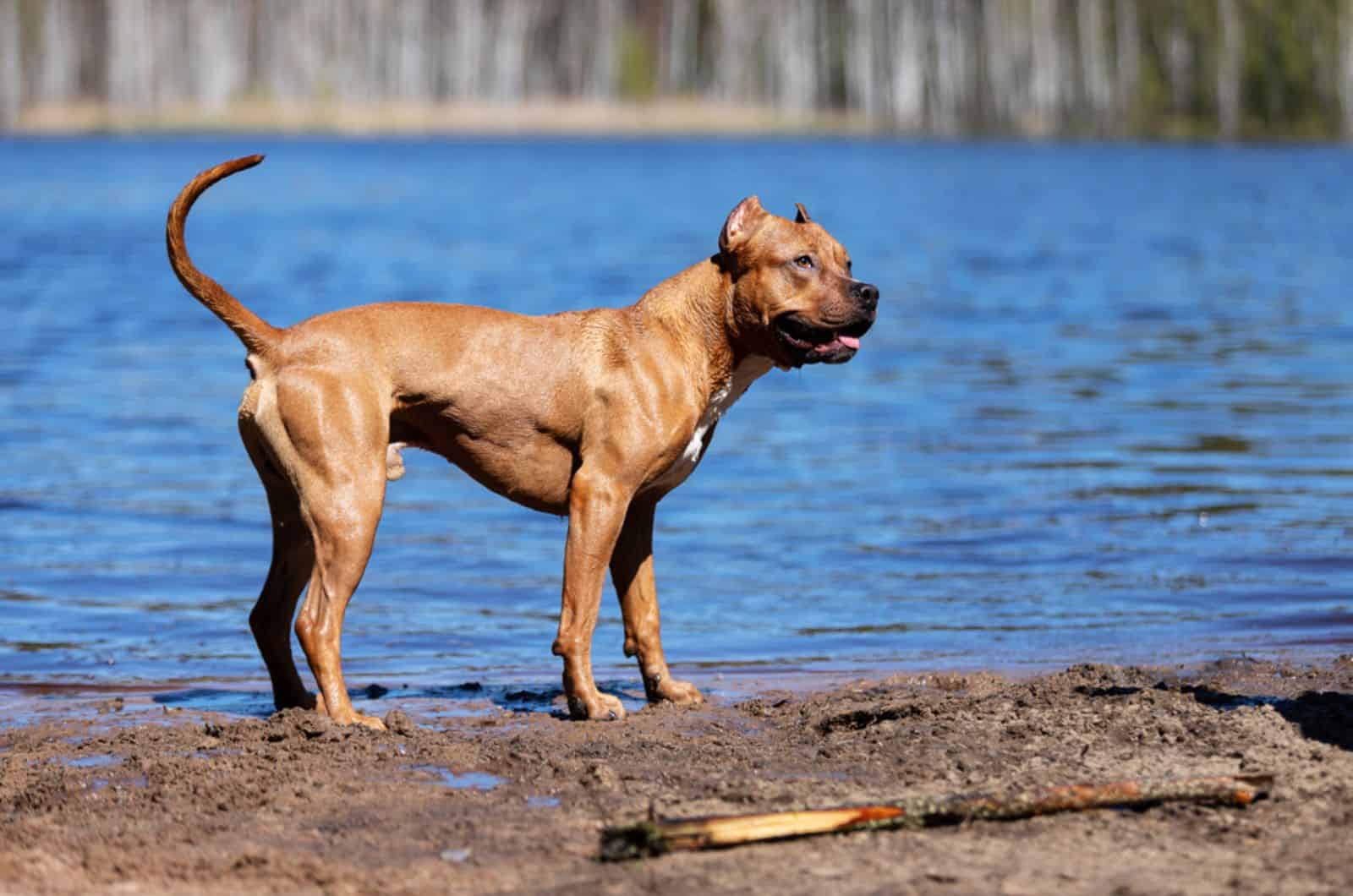
There are several methods that can be used to forecast how much bigger a Pitbull will become.
First things first, let’s talk about how old your Pitbull puppy is. If your dog is younger than a year, there is a good chance that they are still growing.
By the time they turn twelve months of age, the vast majority of Pitbull puppies will have reached or be very near to reaching their full size.
You will probably notice that your Pitbull puppy‘s chest is filling out a bit more between the ages of 12 and 18 months, but they shouldn’t be putting on considerable weight after their first birthday.
Checking the paws of your pet is another good way to get a picture of how big your pup will grow.
If the paws of a Pitbull doggie are still bigger than the rest of its body, its current size is still not the final one. This is a sure sign that your pet will continue developing both in weight and size.
In conclusion, if you got your pet from a Pitbull breeder, you may get in touch with them to find out more information about the expected mature size of your Pittie as it grows up.
Your breeder should be able to offer you a more accurate estimate of how large your Pitbull puppy may grow to be as an adult based on the parents of your pup as well as previous litters of Pitbull puppies.
How Can I Ensure That My Pitbull Is In Good Health?
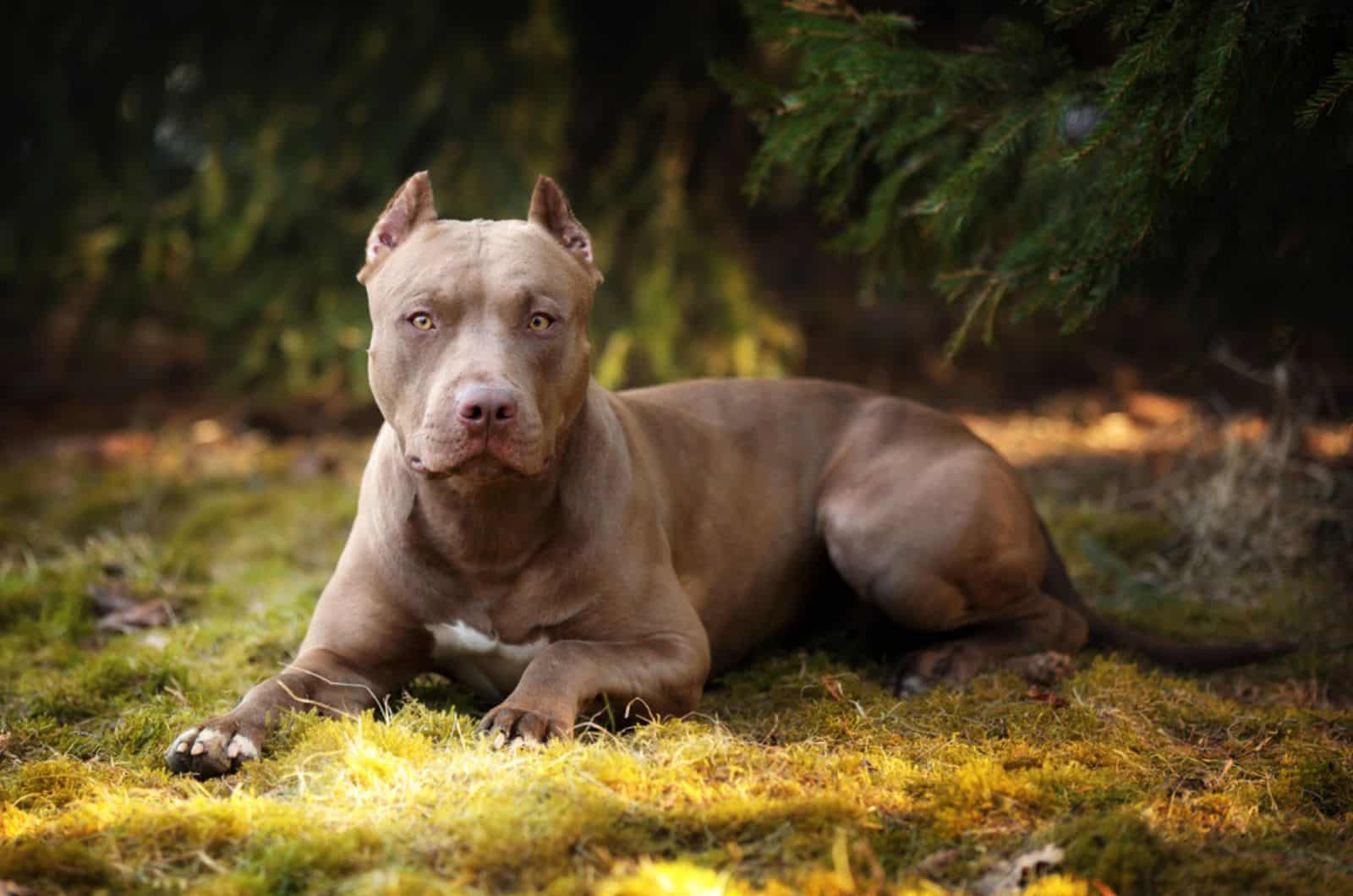
Because our Pitbulls are such treasured parts of the family, we only want the best for them, and we know that their physical state plays a huge part in both their contentment and their general well-being.
When it comes to pet care, prevention is almost always preferable to treatment in every situation.
Regular visits to the veterinarian for checkups, screenings, blood testing, and vaccines are essential preventative measures that can help Pitbulls avoid or reduce the severity of future health problems.
Your Pitbull puppy will require frequent vaccination within the first six months of its life, after which it should be examined by a veterinarian for a routine checkup at least once per year.
Pitbulls have an increased risk of developing a variety of health conditions, including but not limited to damaged knee ligaments, thyroid disorders, hip dysplasia, cataracts, and much more.
Pitbulls are more likely to suffer from allergies, which are often referred to as “atopy.” Dogs will typically have itchy skin in response to an allergy, as opposed to people who get runny noses and watery eyes.
Your dog may have allergies if he has recurrent ear infections, excessively licks his paws, and rubs his face.
Symptoms that appear on the skin might be worsened if the Pitbull is overweight, as excessive weight often causes additional folds and wrinkles on the dog’s body.
Obesity can also impact the bones and joints of your pet, which is why they’re prone to health issues related to these parts of their body.
Fat Pitbull Veterinary Costs
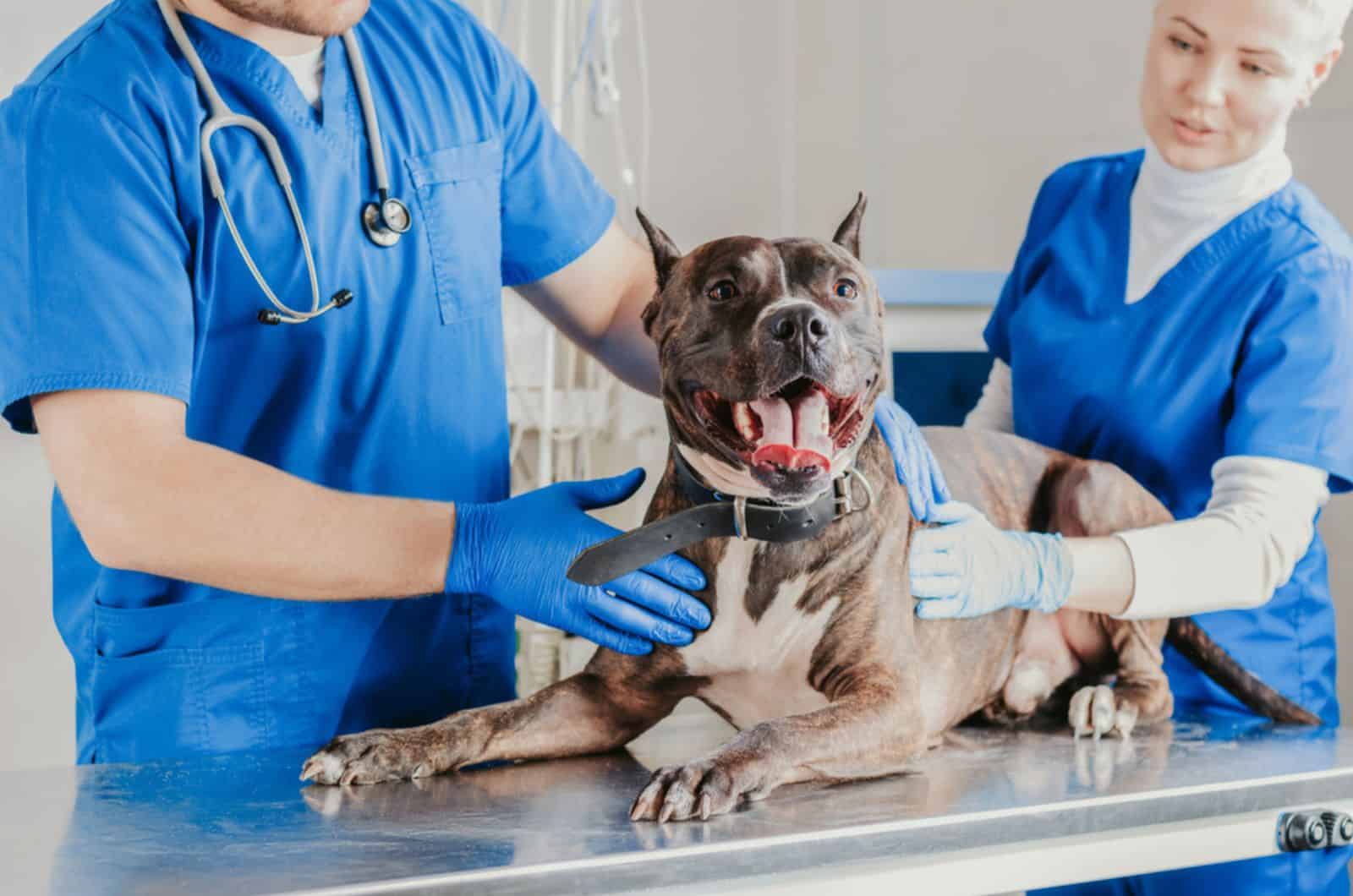
Through preventative care, a wide variety of health issues can be remedied, alleviated, or circumvented totally.
Unfortunately, the cost of veterinary care is rising, making it challenging for many dog owners to maintain frequent visits to vet offices.
If your pet has a health problem, the expense of treating it might easily rise to thousands of dollars.
For instance, Pitbulls have a higher risk of getting cataracts, and the standard procedure for treating cataracts, i.e., cataract surgery, often costs between $2,700 and $4,000 on average.
According to a poll, just one in five pet owners stated that they would be able to pay for a $5,000 veterinarian bill out of their own pocket. This places many pet owners in a difficult financial position in the event that their dog requires surgery or other veterinary services.
Because of this, having pet insurance is quite vital.
In the event that something bad happens to your dog, having pet insurance can reimburse you for up to 90 percent of the money you had to pay out of pocket for veterinary care. This will offer you peace of mind.
Pitbull insurance provides you with a safety net in the event that your pet suffers from sickness or is harmed.
If you have pet insurance, you and your veterinarian will be able to concentrate on giving your pet the best dog medical care available without having to worry about the expense of doing so.
Wrapping Up
Fat Pitbull is often used as a term that describes chubby Pitties that might look cute, but it’s important to understand that their excessive weight might become a serious health issue.
Responsible dog owners try to take the best care of their pups, but it’s a challenging task, especially when it comes to the dog’s diet.
Many will agree that the look of their pets after they empty their food bowls makes it really hard not to give them more food, but that’s exactly the whole point of a balanced diet.
Just because our pets express a wish for more food doesn’t mean that they really need it.
Owning a fat Pitbull doesn’t mean that you’re a bad dog owner, it just means that you need to take more control over your pup’s diet and nutritious intake in order to keep them healthy and happy throughout their life.
READ NEXT:
Gotti Pitbull – A Family-Favorite Pitbull Bloodline
Pitbull Feeding Chart: How Much Should A Pitbull Eat
16 Dogs That Look Like Pitbulls – Similarities And Differences
Homemade Dog Food For Pitbulls: Try Out 6 Easy Recipes
5 Excellent Red Nose Pitbull Breeders From The USA (2022)!













